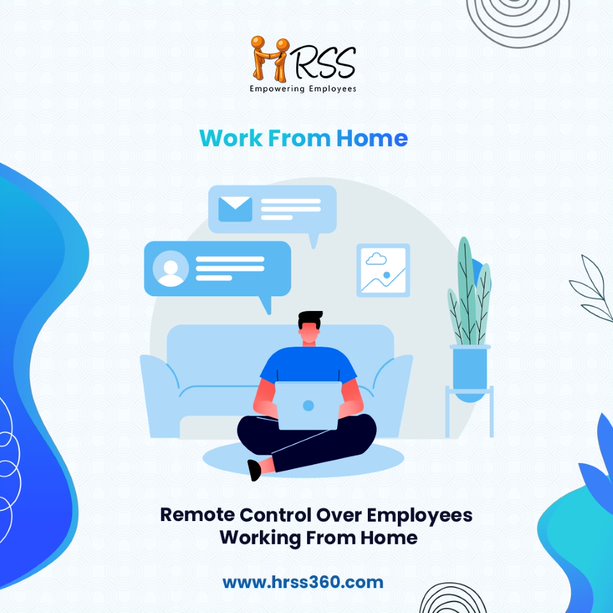With the advent of technology, the traditional concept of office space has undergone a significant transformation. The advent of remote work has not only redefined the way we perceive the workplace but has also necessitated innovative solutions to address the challenges posed by the dispersed nature of teams. In this paradigm shift, Employee Self-Service (ESS) portals have emerged as a game-changer, revolutionizing the employee experience, and streamlining operations in the era of remote work.
The Evolution of Remote Work
The concept of remote work is not new, but recent advancements in technology have propelled it to the forefront of the corporate world. The rise of cloud computing, collaboration tools, and high-speed internet has paved the way for organizations to adopt flexible work arrangements. As a result, employees are no longer bound by geographical constraints, enabling them to contribute to their organizations from the comfort of their homes or any remote location.
Challenges in the Remote Work Environment
While remote work brings numerous benefits, it also presents unique challenges that organizations must address to ensure seamless operations. One of the primary challenges is maintaining effective communication and collaboration among team members who are physically separated. Additionally, managing administrative tasks, such as leave requests, expense reports, and accessing company information, can become cumbersome without a centralized and efficient system in place.
Enter Employee Self-Service Portals
Employee Self-Service portals have emerged as a vital tool in overcoming the challenges associated with remote work. These portals act as centralized hubs that empower employees to manage various aspects of their work life independently. From submitting time-off requests to accessing pay stubs and updating personal information, ESS portals streamline administrative processes, providing employees with the autonomy they need to navigate the complexities of remote work.
Key Features of Employee Self-Service Portals
Accessibility and Convenience: One of the primary advantages of ESS portals is the accessibility they offer. Employees can log in from anywhere, at any time, eliminating the need for physical presence in the office. This level of convenience not only enhances the employee experience but also fosters a sense of autonomy and flexibility.
Time and Attendance Tracking: ESS portals often include features for time and attendance tracking. Employees can easily log their work hours, submit timesheets, and request time off. This not only streamlines the payroll process but also ensures accurate and transparent record-keeping.
Personal Information Management: Employees can update their personal information, such as contact details and emergency contacts, without the need for manual intervention from the HR department. This not only reduces the administrative burden on HR professionals but also ensures that employee records are always up to date.
Leave Requests and Approvals: Managing leave requests can be a logistical challenge in a remote work environment. ESS portals facilitate the submission of leave requests and automate the approval process, providing a seamless and transparent workflow for both employees and managers.
Access to Company Policies and Resources: ESS portals serve as a centralized repository for company policies, handbooks, and other essential resources. This ensures that employees have easy access to the information they need to navigate company guidelines, even when working remotely.
Employee Training and Development: Some ESS portals go beyond administrative functions and include features for employee training and development. This enables organizations to invest in the continuous growth and upskilling of their remote workforce.
Benefits for Employees and Employers
The implementation of Employee Self-Service portals brings about a myriad of benefits for both employees and employers in the era of remote work.
Empowerment and Autonomy for Employees: ESS portals empower employees by giving them control over various aspects of their work life. This autonomy contributes to a positive employee experience and fosters a sense of responsibility.
Efficiency and Time Savings: Automation of administrative processes through ESS portals significantly reduces the time spent on manual tasks. This not only enhances operational efficiency but also allows HR professionals to focus on strategic initiatives rather than routine paperwork.
Enhanced Communication and Collaboration: Many ESS portals include communication features that facilitate collaboration among remote team members. Features such as instant messaging, discussion forums, and document sharing contribute to improved communication and teamwork.
Cost Savings and Sustainability: The adoption of remote work, coupled with ESS portals, can result in substantial cost savings for organizations. Reduced office space requirements, lower utility costs, and decreased reliance on paper contribute to a more sustainable and cost-effective business model.
Data Security and Compliance: ESS portals often come equipped with robust security measures to safeguard sensitive employee data. This ensures compliance with data protection regulations and instills confidence in employees regarding the security of their personal information.
Conclusion
In the era of remote work, Employee Self-Service portals have emerged as indispensable tools for organizations aiming to navigate the challenges of a dispersed workforce. These portals not only streamline administrative processes but also empower employees, enhance communication, and contribute to a positive work culture.


No comments yet